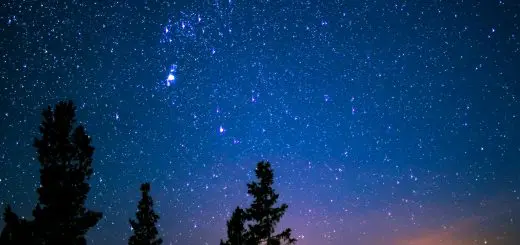Why is Chinese New Year Celebrated? Discover the Meaning

Looking for more amazing products? Check out our online store and explore our collection here! Happy shopping!
Before diving in, please note: This post is for informational purposes only. If you’d like to know more about how we approach topics, feel free to check out our friendly Disclaimer Page.
Hey there, amazing readers! 
We’re committed to delivering quality posts, and your support (even just sticking around despite the ads) means everything to us. So, bear with us, and thanks for helping us keep the good vibes rolling. Now, on to the fun stuff!
TRANSLATE BUTTON AT THE END OF THE ARTICLE
A Quick Overview
Chinese New Year, also known as the Spring Festival, is a vibrant celebration filled with rich traditions and cultural significance.
It’s more than just a new year celebration; it’s a deeply rooted festival that brings families together, honors ancestors, and looks forward to new beginnings.
Every year, millions of people around the globe partake in the festivities, each bringing their unique flair to the age-old customs.
In this article, we’ll explore the reasons behind the celebration of Chinese New Year and uncover the meanings woven into its fascinating traditions.
Understanding the Rich History of Chinese New Year
The history of Chinese New Year stretches back thousands of years.
Its origins are shrouded in legends, with one of the most popular tales involving the mythical beast, Nian.
According to folklore, Nian terrorized villages at the start of each year.
Villagers discovered that the monster feared loud noises, bright lights, and the color red.
Thus began the practices of fireworks, lanterns, and wearing red clothing to ward off Nian.
Historically, it was a time to honor ancestors and deities.
Families would prepare elaborate offerings and perform rituals to ensure blessings for the coming year.
Over the centuries, the festival evolved, absorbing various regional customs and practices.
Today, it reflects a blend of ancient traditions and modern influences, showcasing the resilience and adaptability of Chinese culture.
The Lunar Calendar: Timing the Festivities Right
Chinese New Year follows the lunar calendar, which is why its date changes each year.
The festival typically falls between January 21 and February 20, coinciding with the first new moon after the winter solstice.
This connection to the lunar cycle underscores the importance of nature and agriculture in Chinese society.
The celebration lasts for 15 days, culminating in the Lantern Festival.
Each day features specific customs and activities.
For instance, the first day is designated for family reunions, while the fifth day is known as the birthday of the God of Wealth, a day for welcoming prosperity into homes.
Following the lunar calendar is more than just a timing mechanism; it reflects a broader understanding of cycles in life, reminding us to embrace renewal and growth year after year.
Symbolism of the Chinese Zodiac and Its Animals
The Chinese Zodiac is a significant element of the New Year celebrations, consisting of 12 animals that represent different personality traits.
Each year is associated with one of these animals, rotating in a cycle.
For example, 2023 is the Year of the Rabbit, symbolizing peace and tranquility.
People believe that the zodiac animal influences the year’s fortune.
Hence, many engage in activities that align with the characteristics of the animal.
It’s common to see individuals wearing something red or engaging in activities that promise good luck, aiming to align themselves with the positive traits associated with each year’s animal.
The zodiac also plays a role in personal identity.
Many people celebrate their zodiac year, as it is believed to be a time of change and luck.
This connection fosters a sense of community, as everyone shares in the excitement and anticipation of what the new year will bring.
Cultural Significance: Family, Reunion, and Togetherness
At its core, Chinese New Year is a time for family.
The festival is often dubbed the "Spring Festival" because it marks the beginning of spring and symbolizes rebirth and renewal.
Families travel long distances to reunite, honoring their ancestors and reconnecting with loved ones.
The reunion dinner on New Year’s Eve is the most important meal of the year.
Families gather to partake in a sumptuous feast, with dishes carefully chosen for their meanings.
For instance, fish represents abundance, while dumplings symbolize prosperity.
It’s a time of laughter, storytelling, and shared hopes for the year ahead.
In my own experience, the New Year’s Eve dinner is filled with joy and warmth.
I cherish the moments spent around the table, sharing not just food but dreams and aspirations for the future.
It’s a beautiful reminder of the importance of togetherness in our lives.
Preparations: Cleaning Homes and Setting Up Altars
Preparations for Chinese New Year start well in advance.
Families engage in a thorough cleaning of their homes, symbolizing the removal of bad luck and making space for incoming good fortune.
This tradition of “sweeping the dust” is a way to wash away the past and welcome fresh beginnings.
After cleaning, families set up altars to honor ancestors and deities.
Offerings such as fruits, pastries, and incense are placed on these altars as a sign of respect and gratitude.
This act connects the living with their ancestors, reinforcing the idea of continuity and familial bonds.
I find these preparations fascinating.
The ritualistic aspect of cleaning and setting up altars reflects a deep respect for heritage and the desire to cultivate a prosperous future.
Delicious Foods: What Dishes Are Traditionally Served?
Food plays a pivotal role in the Chinese New Year celebrations.
Each dish served carries its unique symbolism, contributing to the overarching theme of prosperity and luck.
For example:
Fish: Represents abundance and is often served whole to signify completeness.
Dumplings: Resemble ancient Chinese silver ingots, symbolizing wealth.
Noodles: Long noodles symbolize longevity and are eaten uncut to preserve their length.
Rice cakes: Signify progress and the promise of a better year.
In many households, preparing these dishes is a family affair.
Everyone contributes, whether it’s making dumplings or cooking fish, fostering a sense of cooperation and shared purpose.
When I see families bustling around the kitchen, laughter mingling with the delicious aroma of traditional dishes, I can’t help but feel a sense of nostalgia.
It’s about more than just food; it’s about tradition and the love that fills the air.
The Joy of Red Envelopes: Gifts of Good Fortune
One of the most delightful customs during Chinese New Year is the giving and receiving of red envelopes, or "hongbao." Traditionally, these envelopes contain money and are given to children and unmarried adults as a symbol of good luck and prosperity.
The color red is significant as it represents happiness and good fortune.
The act of giving red envelopes is not merely transactional; it’s a way to wish others well and share blessings.
The amounts are often chosen carefully, avoiding numbers that may symbolize bad luck, like four (which sounds similar to the word for death in Chinese).
I remember eagerly anticipating the moment when relatives would hand me those red envelopes, each one a token of good wishes.
It felt like a rite of passage, a tangible reminder that I was part of a larger community celebrating hope and prosperity.
Colorful Decorations: Why Red is the Color of Choice
Red is the dominant color during Chinese New Year, adorning homes, streets, and public spaces.
This vibrant hue symbolizes good fortune, joy, and happiness.
Decorations often include lanterns, couplets with auspicious phrases, and paper cuttings showcasing traditional motifs.
Homes are adorned with red banners and motifs of the zodiac animal of the year.
These decorations not only bring visual delight but also serve as a reminder of the hopes and aspirations for the coming year.
I love walking through neighborhoods during this festive season, where red decorations pop against the winter landscape.
It’s a feast for the eyes, evoking a sense of warmth and celebration amidst the chill.
Vibrant Celebrations: Parades, Lion Dances, and Fireworks
The celebrations of Chinese New Year are nothing short of spectacular.
Cities come alive with vibrant parades featuring lion dances, dragon dances, and cultural performances.
These displays are not only entertaining but also steeped in tradition, believed to bring good luck and ward off evil spirits.
Fireworks are another hallmark of the New Year festivities.
The loud bangs and bright colors are intended to scare away spirits and invite good fortune.
Many people gather to watch dazzling firework displays, often accompanied by the joyous sounds of laughter and celebration.
Experiencing these celebrations firsthand is exhilarating.
The energy in the air is palpable, and it feels like the entire community comes together to mark the occasion, creating memories that last a lifetime.
Traditional Customs: From Lanterns to New Year’s Eve
Chinese New Year is rich with customs and rituals that vary by region but share a common thread of celebrating renewal.
One notable tradition is the Lantern Festival, which marks the end of the New Year celebrations.
Families gather to release lanterns into the sky, symbolizing hope and unity.
On New Year’s Eve, families often practice the custom of “waiting for the new year” by staying up late, playing games, and honoring their ancestors.
This is a time of reflection and anticipation of what the new year holds.
In my family, we have our own unique rituals.
We often play traditional games and share stories from past New Year celebrations, highlighting the importance of continuity and storytelling in our culture.
Global Celebrations: How the World Joins In
Chinese New Year is not just confined to China; it’s celebrated globally, with festivities held in countries like Malaysia, Singapore, and even the United States.
Communities come together to share in the joy of the occasion, showcasing their unique cultural interpretations.
In cities with large Chinese populations, you’ll find grand parades, cultural performances, and food fairs that highlight the diversity of Chinese cuisine.
These celebrations foster a sense of unity and allow people from different backgrounds to learn about and appreciate Chinese culture.
I’ve seen neighbors of different backgrounds join in the celebrations, sharing food and laughter.
It’s heartwarming to witness the blending of cultures, reminding us that joy knows no boundaries.
The Spirit of Renewal: Embracing New Beginnings
Above all, Chinese New Year embodies the spirit of renewal and fresh starts.
It’s a time to reflect on the past year, learn from experiences, and set intentions for the future.
Many people take this opportunity to make resolutions, similar to those made during New Year’s celebrations in the West.
This festival encourages us to embrace change and look forward with optimism.
It reminds us that every ending brings a new beginning, and while challenges may arise, they can be met with hope and resilience.
As I enter each new year, I carry with me the lessons learned and the excitement of what lies ahead.
Chinese New Year serves as a beautiful reminder that life is full of cycles, each offering opportunities for growth and renewal.
Conclusion
Chinese New Year is a celebration that transcends generations and borders.
It’s a time for family, reflection, and hope.
The rich traditions and customs embedded in the festival serve not only to honor the past but also to inspire a bright future.
As we partake in the festivities, let us remember the deeper meanings behind each ritual and the joy of coming together to celebrate life, love, and new beginnings.
Whether through food, family gatherings, or vibrant parades, the spirit of Chinese New Year unites us all in a joyous embrace of renewal.

The Enlightenment Journey is a remarkable collection of writings authored by a distinguished group of experts in the fields of spirituality, new age, and esoteric knowledge.
This anthology features a diverse assembly of well-experienced authors who bring their profound insights and credible perspectives to the forefront.
Each contributor possesses a wealth of knowledge and wisdom, making them authorities in their respective domains.
Together, they offer readers a transformative journey into the realms of spiritual growth, self-discovery, and esoteric enlightenment.
The Enlightenment Journey is a testament to the collective expertise of these luminaries, providing readers with a rich tapestry of ideas and information to illuminate their spiritual path.
Our Diverse Expertise
While our primary focus is on spirituality and esotericism, we are equally passionate about exploring a wide range of other topics and niches 

To ensure we provide the most accurate and valuable insights, we collaborate with trusted experts in their respective domains 
Our blog originally focused on spirituality and metaphysics, but we’ve since expanded to cover a wide range of niches. Don’t worry—we continue to publish a lot of articles on spirituality! Frequently visit our blog to explore our diverse content and stay tuned for more insightful reads.
Hey there, amazing reader! 
Check out our store here and take a peek at some of our featured products below! Thanks for being awesome!










